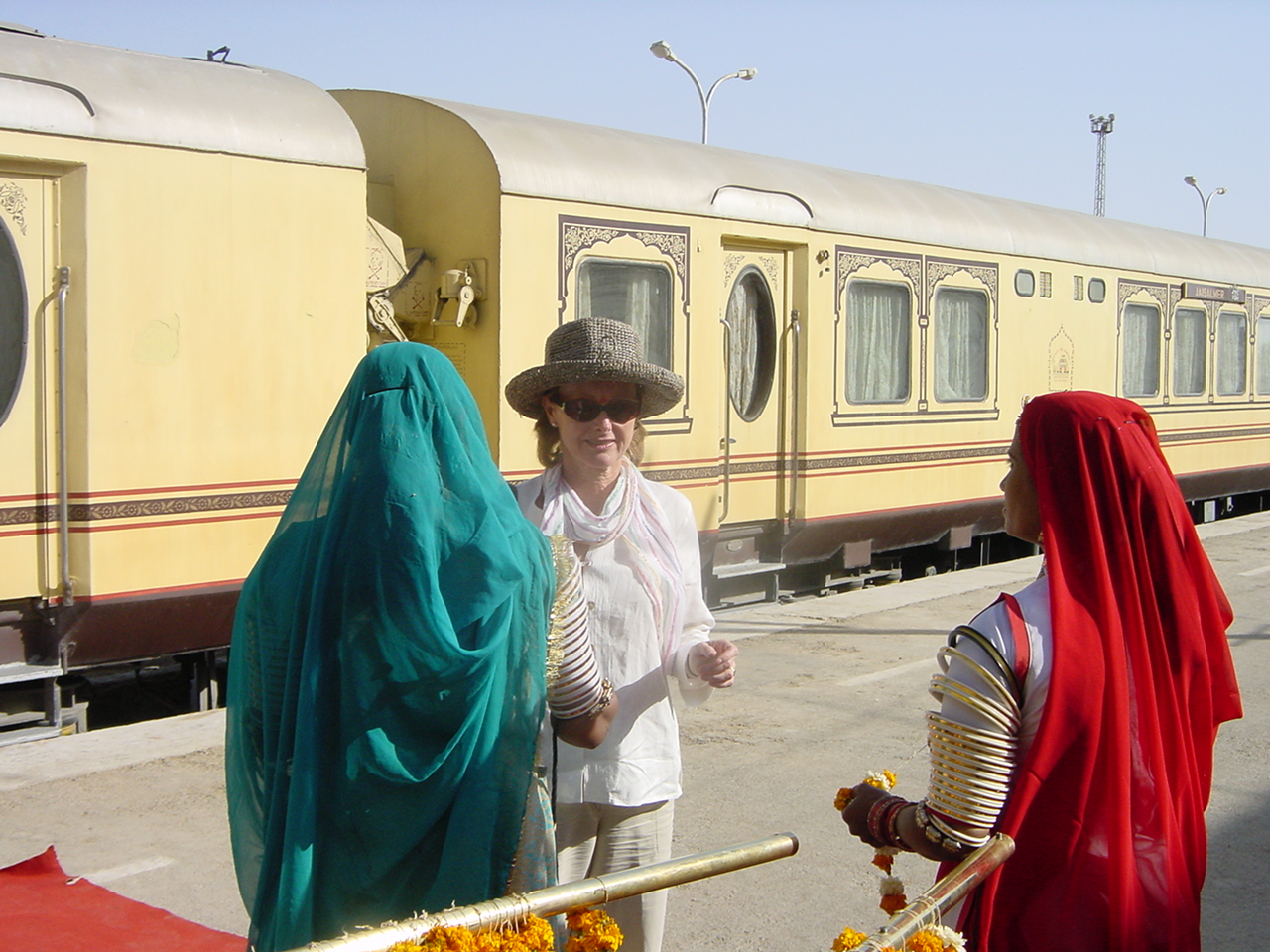Persistent and cheering children swarm around me as if they could read my mind, but the sacred vagrant cows remain unflappable. It’s our last day in India and I can’t sleep. My senses are teeming with sights, smells, sounds, and contrasts: the riches of the palaces and the mud huts of the desert people. The massive forts and the elegant Taj Mahal. The bleakness of the decrepit streets and the joyful brightness of saris. Families perched on mopeds, whiffs of fragrant spices, or stench, blaring sounds, appeasing classical music… At the end of the day, I welcome our retreat aboard the Palace of Wheels.
A Luxury Steam Engine Train
A trip to Rajasthan had been on my bucket list and the logistics were on our hesitant minds. Until we found the Palace on Wheels. This unusual tourist transportation in a developing country is the easiest way to access the major cities of the Golden Triangle: Jaipur, Jaisalmer, Jodhpur, Ranthambore, Udaipur, and Agra. Located in northwestern India, Rajasthan is India’s largest state. The North was the cradle of the Hindu religion, and later of the ruling Rajput caste. During British rule (1858-1947), Rajasthan was known as Rajputana, referred to as The Raj.
We feel catapulted more than driven through the blazing organized chaos of India’s capital and are on time for our check-in and departure from the Delhi Cantonment. Established by the British Army during The Raj, it’s where most trains to Rajasthan depart. Hostesses in saris welcome us with garlands of flowers and a dab of red tikka between our eyebrows.
The 14-coach-long train was built to replicate those fit for Maharajahs and replaced the disabled Orient Express. Luxury, however, is about convenience and not lavish accommodation. Like on a cruise, we travel at night, in a cabin slightly wider than the train tracks. The en-suite bathroom is the size of a converted cabin. It’s old but spacious and clean. And we have air conditioning, WIFI, digital television, and a spa.
My husband is slowly coming to terms with our downsizing from the sophisticated Taj Mahal in New Delhi. I only try to unpack, keeping most of my clothes in the suitcase that I manage to stow under my bed. I feel like a privileged gypsy in a décor of colorful silk curtains and bed covers, and with a turbaned butler eager to please. It began when he attired us with Indian wraps for the photo souvenir, including an impressive ready-to-wear turban for Jim. “It’s not going to work,” he says with a frown, after parking himself in the narrow gap between our two narrow beds. Meanwhile, sweat smudged the red tikka down to his nose.
Like a Cruise on Train Tracks
Shortly after the train starts rolling, my attention is diverted to the open side of a dark hangar where gray and black shapeless forms move around. I am shocked when I realize they are people. Did they leave the harsh countryside for the opportunities of the big city? Are they Dalits, the lowest of all castes? Reportedly, Dalits are rejected, exploited, and violented despite the abolition of the caste system, in 1950, and the pressure from human rights organizations. And, they eke a living doing the filthiest jobs, such as clearing human excrement from train tracks.
Our first of seven days begins in the lounge of our private car of four suites, with an English breakfast in the convivial company of three other couples, including the Rajasthan Air Marshall, his wife, and his daughter. His knowledge of history is a fantastic privilege for travelers like us, who are interested in his country. The presence of this honorable guest also bestows upon us the service of an armed military guard. However, the Air Marshall dismisses him from the lounge every morning, visibly eager to enjoy his personal time.
Food has been baffling at times. It has little to do with Western Indian food, and the international menu has its own twists. Regardless of preference or sequence, servers queue up to ladle on our plates a mixed load of both menus. One day, the sauce for a bland meat dish appears with our dessert. Meals are prepared laboriously from scratch in the kitchen car, but the know-how in the dining room is lacking. I imagine the servers trying to figure out how to serve a confusing array of dishes that are totally foreign to them. Lunches in the touristic buffets of hotels are more satisfying, although breakfast has become my main meal.
India On My Mind
In this land of extremes, the colossal walls of forts built over hundreds of years baffle our understanding as they rise and stretch in the barren countryside. We keep visiting the well-preserved palaces of the Rajput royal families, which appear like humongous jewelry boxes filled with treasures. As for the natural world, our tiger-sighting tour has yielded none—because of poachers. But we’d sway on a camel until we’d dismount for a memorable high tea in the desert.
At most of our daily destinations, we step down onto the train station platform where women have been waiting for us, some with babies or young children in tow. They know when the Palace on Wheels comes to town. Is it their bright saris and their hands matter-of-factly held out that give them a dignified composure? We all feel awkward to see them ordered back so we can board a luxury coach.
Occasionally, the unusual sight of crops interrupts the dry monotony of the desert landscape. Millet and bulgur appear as the only cereal grains growing in the sandy and saline desert.
We spent the evenings with our fellow travelers in the Jaipur lounge—each car is named after a Rajput state—or in the bar lounge, pondering what we have seen, and discussing India’s challenges in bringing 1,21 billion people into the 21st century. Sometimes, we gaze out the window of our cabin. Often, there is nothing to see in the moonlight but the endless desert.
As the train rolls over the Thar Desert, we are in the world’s most populated arid region and the poorest. It occupies seventy percent of Rajasthan, and 60 million people live here. The eerie shadows of mud huts, one or two camels, a buffalo or an ox, and a few goats roam the isolated and walled family compounds along the tracks. En route to Jaisalmer, one night, and looking out the window, I think I am hallucinating when the bare landscape morphs into a field of military tanks: we are close to the ongoing conflict since the partition of Pakistan from India.
As for shopping, there is no holding back. The Indian artisans tempt us with luxurious textiles, dazzling jewelry, and quality souvenirs.
Note
Since our trip The Palace on Wheels was refurbished twice, the last time was in 2018. Another luxury train is the Maharaja Express which offers several routes.
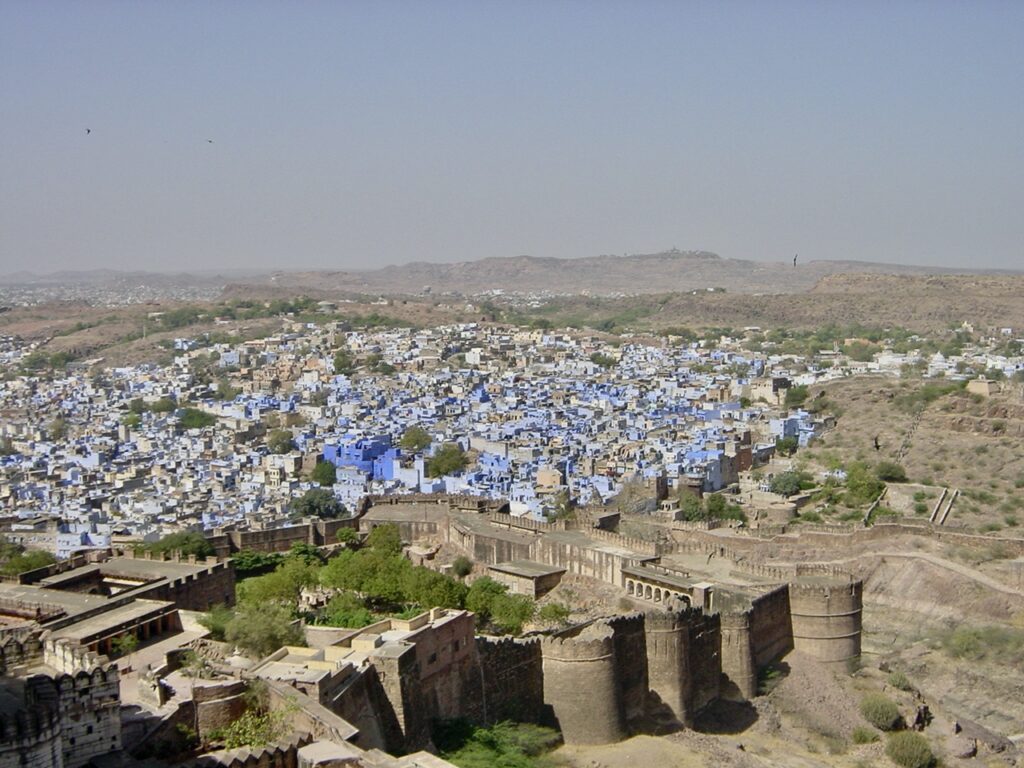
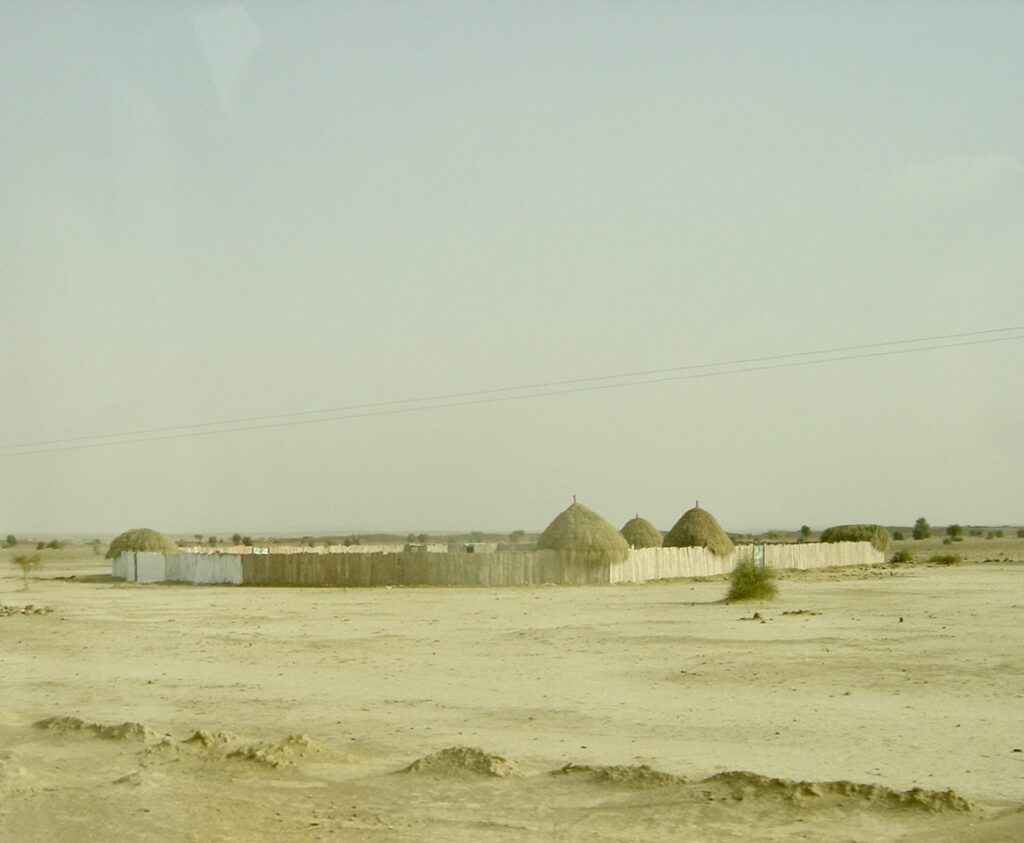
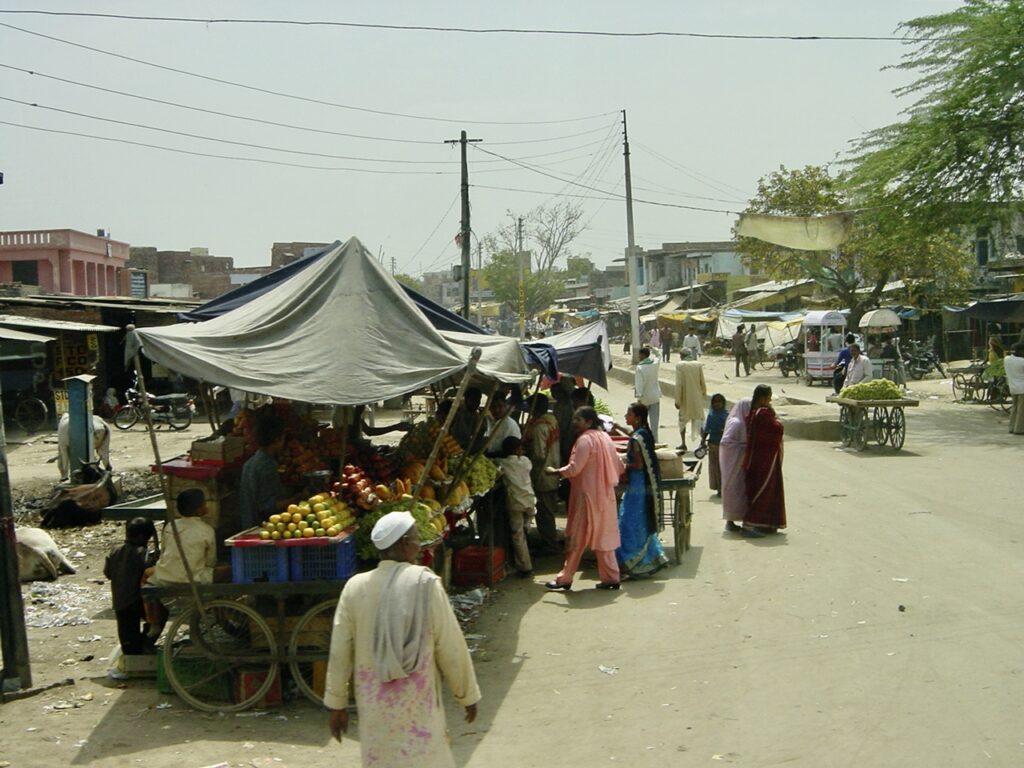
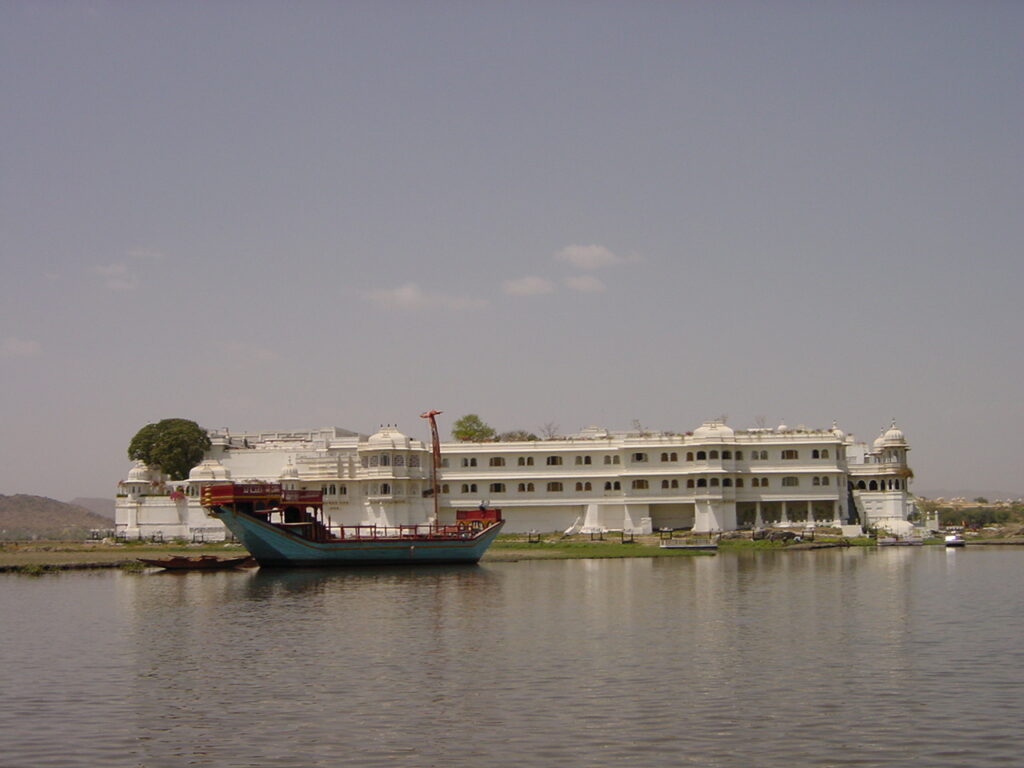
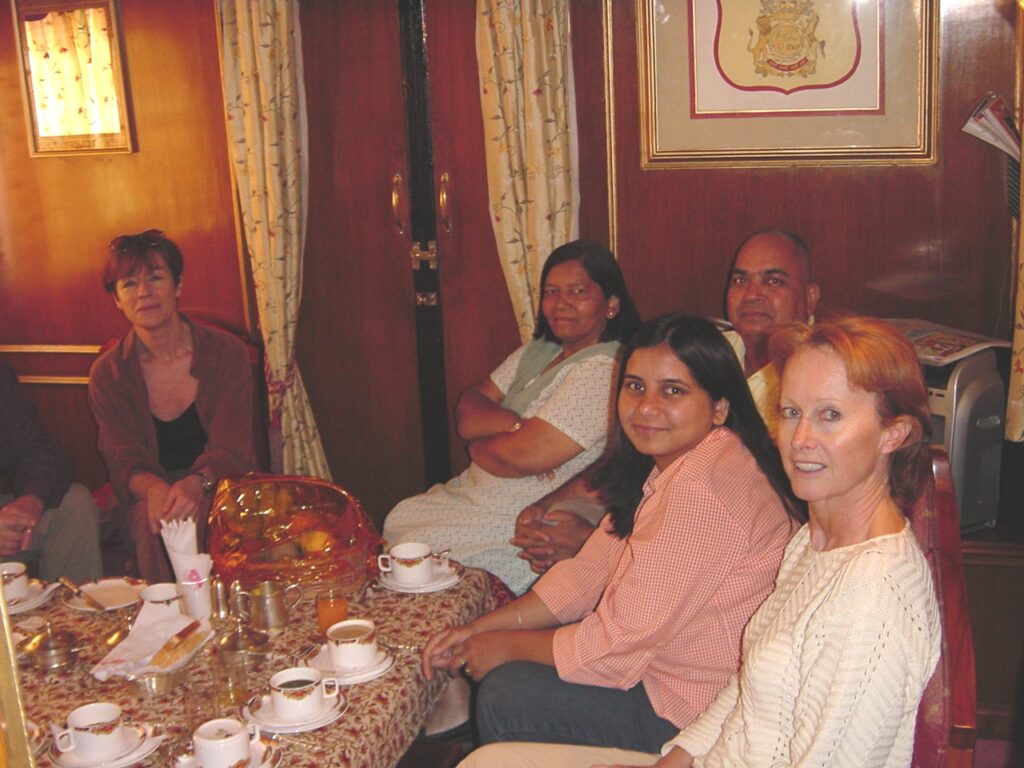
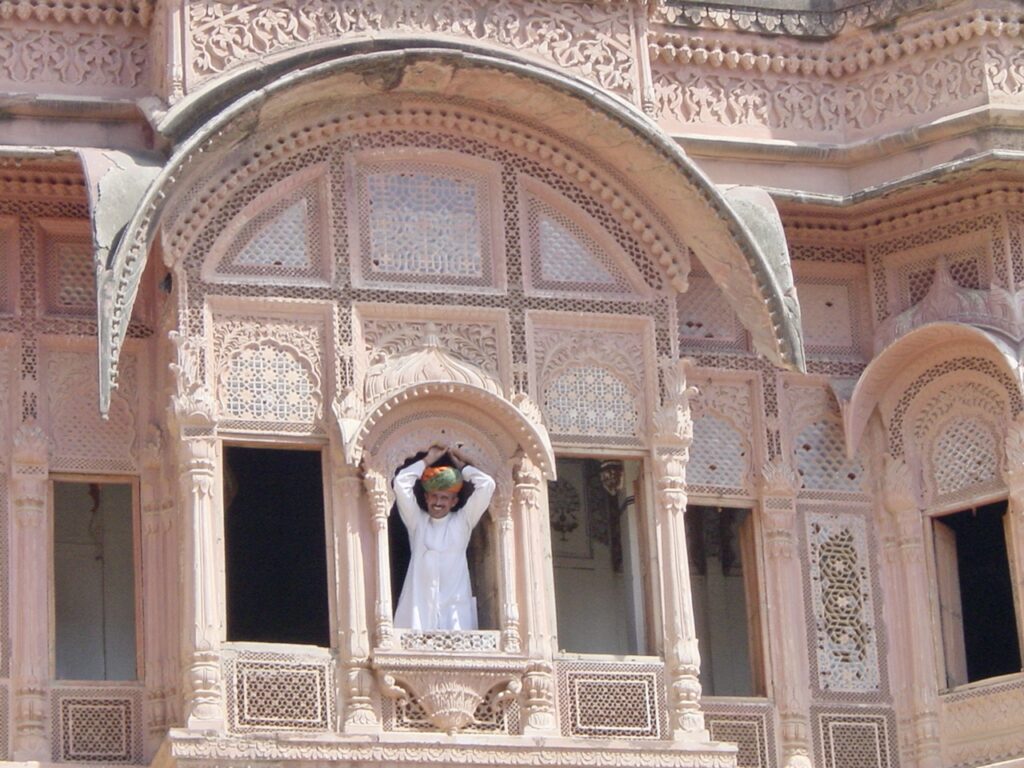
Original article 2012 Buckettripper – new version 2014 The West Vancouver Beacon – Revised 2022

